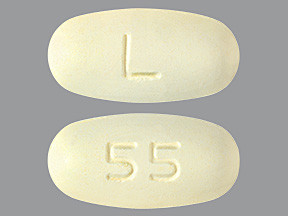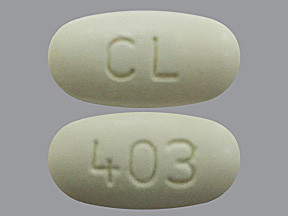NEVIRAPINE EXTENDED-RELEASE - ORAL
PHONETIC PRONUNCIATION: (ne-VIR-a-peen)
COMMON BRAND NAME(S): Viramune XR
GENERIC NAME(S): nevirapine
Uses
USES: Nevirapine is used with other HIV medications to help control HIV infection. It helps to decrease the amount of HIV in your body so your immune system can work better. This lowers your chance of getting HIV complications (such as new infections, cancer) and improves your quality of life. Nevirapine belongs to a class of drugs known as non-nucleoside reverse transcriptase inhibitors (NNRTIs). Nevirapine is not a cure for HIV infection. To decrease your risk of spreading HIV disease to others, do all of the following: (1) continue to take all HIV medications exactly as prescribed by your doctor, (2) always use an effective barrier method (latex or polyurethane condoms/dental dams) during all sexual activity, and (3) do not share personal items (such as needles/syringes, toothbrushes, and razors) that may have contacted blood or other body fluids. Consult your doctor or pharmacist for more details. Nevirapine should not be used to prevent HIV infection after accidental exposure (such as needle sticks, blood/bodily fluid contact). Different HIV medications are used to prevent infection after exposure.
How to use NEVIRAPINE EXTENDED-RELEASE - ORAL
HOW TO USE: Read the Medication Guide provided by your pharmacist before you start using nevirapine and each time you get a refill. If you have any questions, talk to your doctor or pharmacist. Take this medication by mouth with or without food as directed by your doctor, usually once daily. Do not crush, chew, or split the tablets. Doing so can release all of the drug at once and increase the risk of side effects. If you have never taken nevirapine before, you must take the immediate-release form of nevirapine for 14 days, before starting to take the extended-release form. If you have already taken the immediate-release form of nevirapine for more than 14 days, you may start taking the extended-release tablets right away. However, never take two different forms of nevirapine at the same time. The dosage is based on your medical condition and response to treatment. In children, the dosage is also based on body size. If you stop taking this medication for more than 7 days for reasons other than the serious reactions described in the Warning section, ask your doctor for directions on how to restart treatment. You may need to take the immediate-release form of this medication once daily again for the first 14 days to decrease the risk of serious side effects. It is very important to continue taking this medication (and other HIV medications) exactly as prescribed by your doctor. Do not skip any doses. Do not increase your dose, take this drug more often than prescribed, or stop taking it (or other HIV medicines) even for a short time unless directed to do so by your doctor. Skipping or changing your dose without approval from your doctor may cause the amount of virus to increase, make the infection more difficult to treat (resistant), or worsen side effects. For the best effect, take this medication at evenly spaced times. To help you remember, take this medication at the same time every day.
Side Effects
Precautions
Interactions
Overdose
Images

- color
- light yellow
- shape
- oblong
- imprint
- L, 55

- color
- off-white
- shape
- oblong
- imprint
- 403, CL
Reviews
Faq for NEVIRAPINE EXTENDED-RELEASE - ORAL
- Nevirapine extended-release is used in combination with other medications to treat HIV infection. It helps to control the virus and improve immune system function.
- Take nevirapine extended-release exactly as prescribed by your doctor. It is usually taken once daily with a meal. Do not crush or chew the tablets; swallow them whole.
- If you miss a dose of nevirapine extended-release, take it as soon as you remember. However, if it is almost time for your next dose, skip the missed dose and continue with your regular dosing schedule. Do not double the dose to make up for the missed one.
- Common side effects of nevirapine extended-release may include rash, fever, headache, nausea, vomiting, fatigue, and liver problems. Contact your doctor if any of these side effects persist or worsen.
- Yes, nevirapine extended-release can interact with various medications, including certain antifungal drugs, antibiotics, antidepressants, and anticonvulsants. It is important to inform your doctor about all the medications you are taking to avoid any potential interactions.
- Contact your doctor immediately if you experience signs of an allergic reaction (such as rash, itching, swelling, severe dizziness) or symptoms of liver problems (such as yellowing of the skin/eyes, dark urine, persistent nausea/vomiting, abdominal pain).
- Nevirapine extended-release may be used during pregnancy if the potential benefits outweigh the risks. It is important to discuss the risks and benefits with your doctor, as HIV infection can be harmful to the unborn baby.
- Nevirapine is generally not recommended for children younger than 3 months old. The safety and effectiveness in children above this age can vary, so it is best to consult with a pediatrician.
- The duration of nevirapine extended-release treatment will depend on individual factors, such as your response to the medication and the progression of your HIV infection. You will need to continue taking it for as long as prescribed by your doctor.
Warning
WARNING: Rarely, nevirapine has caused severe (sometimes fatal) liver problems. Get medical help right away if you develop symptoms of liver problems, such as persistent nausea, loss of appetite, vomiting, stomach/abdominal pain, dark urine, pale stools, yellowing eyes/skin, unusual tiredness, rash. Rarely, nevirapine has also caused serious (sometimes fatal) skin/allergic reactions. Get medical help right away if you have any signs of skin/allergic reactions, including rash, itching/swelling/redness (especially of the eyes/face), blisters, fever, persistent sore throat, unusual tiredness, mouth sores, severe dizziness, trouble breathing, signs of kidney problems (such as change in the amount of urine), muscle pain/tenderness/weakness, joint pain. Women are at increased risk for developing these severe reactions. To help decrease the risk of skin/allergic reactions in all patients, nevirapine is started at a lower dose for the first 14 days. Also, people with higher T-cell counts at the start of nevirapine treatment are at greater risk for liver problems. Therefore, nevirapine is usually only started if the T-cell count is fewer than 250 in women or fewer than 400 in men. Keep all medical and laboratory appointments so your doctor can monitor how you are responding to nevirapine. The risk of these serious side effects is high in the first 18 weeks and highest during the first 6 weeks of nevirapine treatment. However, these side effects may occur at any time while taking this medication. If you have stopped taking nevirapine because of liver problems or skin/allergic reactions, you must never take any form of nevirapine again. Tell all of your doctors and pharmacists if you have ever stopped taking nevirapine because of these types of reactions.
Disclaimer
IMPORTANT: HOW TO USE THIS INFORMATION: This is a summary and does NOT have all possible information about this product. This information does not assure that this product is safe, effective, or appropriate for you. This information is not individual medical advice and does not substitute for the advice of your health care professional. Always ask your health care professional for complete information about this product and your specific health needs.
No Reviews Yet